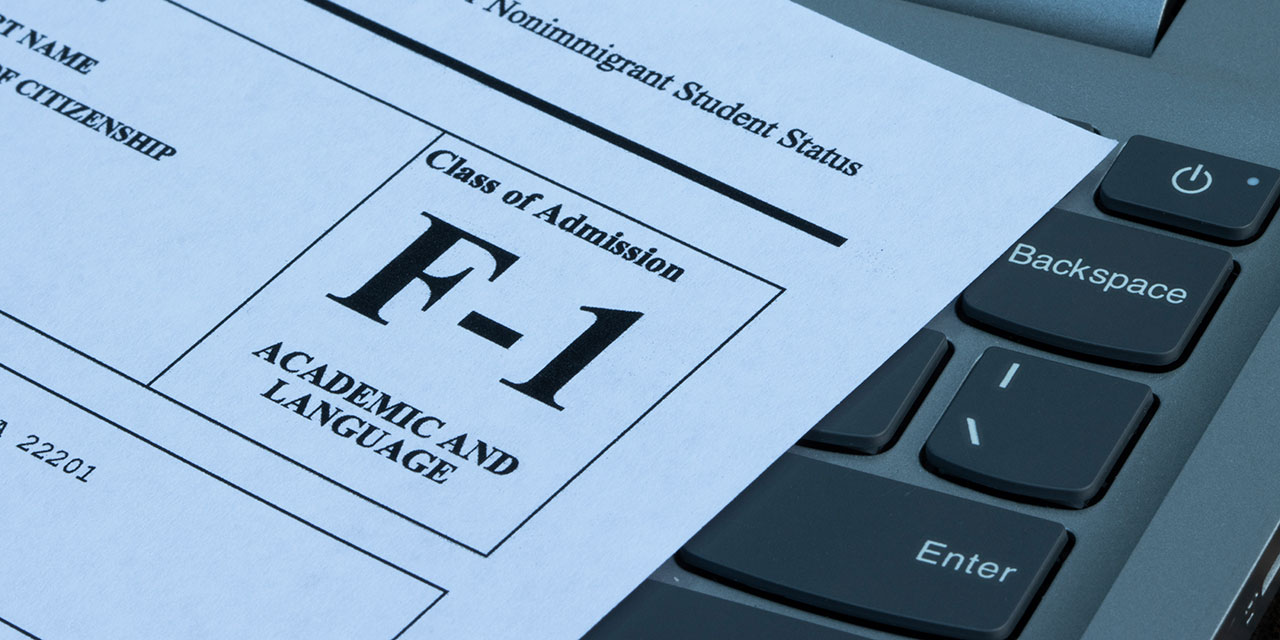
Last month, the Department of Homeland Security proposed a rule that would transform America’s international student visa system. The rule would replace the long‑standing “duration of status” framework for foreign students with a fixed, four‑year admission period. If enacted, the proposal would discourage talented students from coming to the United States and impose unnecessary burdens on those already here.
Since 1979, the U.S. has admitted international students under the F-1 or “student” visa for “duration of status”—an indefinite period during which students are enrolled full-time or performing authorized work. The Trump administration’s proposed rule would limit these students to four-year stays and require them to file extension requests with U.S. Citizenship and Immigration Services.
In a press release, DHS argued that the duration-of-status system has been abused by “‘forever’ students” who have “perpetually enrolled in higher education courses to remain in the U.S.” But as the department notes in its proposed rule, only about 2,100 foreigners who received F-1 visas between 2000 and 2010 remain in the country today—a small fraction of the total approved visas during that time.
Nevertheless, DHS insists that limiting F-1 visa holders’ stays and requiring extension applications will help the department “properly vet and oversee” foreign students and crack down on those “who remain in the U.S. virtually indefinitely” and cost “untold amount of taxpayer dollars.” These claims are misleading.
First, today’s F-1 visa holders are rigorously vetted. Universities’ international offices work closely with ICE and United States Customs and Immigration Services to ensure compliance. For example, when students seek Optional Practical Training (OPT)—a temporary employment authorization for F-1 visa holders—or any other work authorization, their application must be reviewed and approved by USCIS and DHS.
Second, even under the duration-of-status framework, F-1 student visa holders cannot simply stay in America “indefinitely” without oversight. To maintain their status, international students must remain enrolled full-time at an accredited institution, make progress toward completing their program, and report any changes through official channels. Designated school officials regularly update DHS’s Student and Exchange Visitor Information System (SEVIS) with students’ enrollment status, addresses, degree programs, employment authorizations, and more. Students who fail to maintain their status can be deported.
Third, foreign students typically pay full tuition, receive little financial aid, and are net contributors to the economy. In 2023–24, for example, only 19 percent of international students listed their university as the primary funder of their schooling. Foreign students contributed $50 billion to the U.S. economy in 2023. In fact, international students effectively subsidize the cost of education for many American students.
Ending duration-of-status would create several complications for talented students. For example, the four-year cap would keep them from finishing their degrees or making necessary changes to their academic plans without requesting an extension. Most higher-level degree programs take longer than four years to complete—Ph.D. programs, for instance, can take about five or six years. The cap also would effectively prevent F-1 graduate students from transferring to a different university or even changing majors without applying for an extension.
The proposed rule would also restrict students’ ability to participate in Optional Practical Training, a program that lets international graduates work in the U.S. for up to 36 months. Students who wanted to pursue OPT would be forced to seek an extension, turning what was effectively a routine benefit into an uncertain, case-by-case decision. The newly required extension-of-stay application will lead to longer processing times, which will place F-1 students in further jeopardy given DHS’s proposal to cut the post-graduation grace period from 60 to 30 days.
Finally, the proposal would force students to file extension requests any time they need to stay past the initial period—even to finish longer degrees or start OPT—shifting oversight from SEVIS to USCIS. This would expand USCIS’s 3.8-million-case backlog; adding close to 243,000 OPT participants will create delays, status gaps, and inadvertent unlawful presence that USCIS will have to adjudicate.
Attracting talented foreign students is crucial to American soft power. U.S. universities have long drawn global talent, students who, as alumni, often serve as informal ambassadors. Treating those students as threats will drain that goodwill. If Washington signals “study here, but don’t work or stay,” the U.S. could cede its status as the world’s academic destination of choice.
DHS should consider another fix. The department should set a ten-year F-1 window that allows students to move across undergraduate, graduate, and OPT programs—or shift to another status, like H-1B—and require them to file USCIS extensions only beyond that cap, while retaining all existing work-authorization application requirements. This would address abuses while reflecting the needs of F-1 students.
Student visas exist to bring top-tier talent to the United States, a benefit that vastly outweighs its rare abuses. Those who game the system should be punished, but basing policy around these exceptions threatens to undermine America’s world-class education pipeline.
Photo: hapabapa / iStock / Getty Images Plus
City Journal is a publication of the Manhattan Institute for Policy Research (MI), a leading free-market think tank. Are you interested in supporting the magazine? As a 501(c)(3) nonprofit, donations in support of MI and City Journal are fully tax-deductible as provided by law (EIN #13-2912529).

















